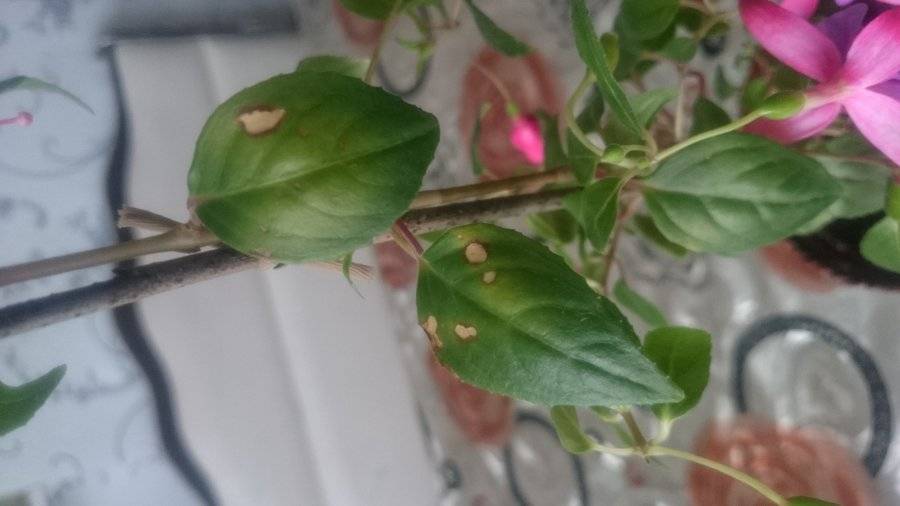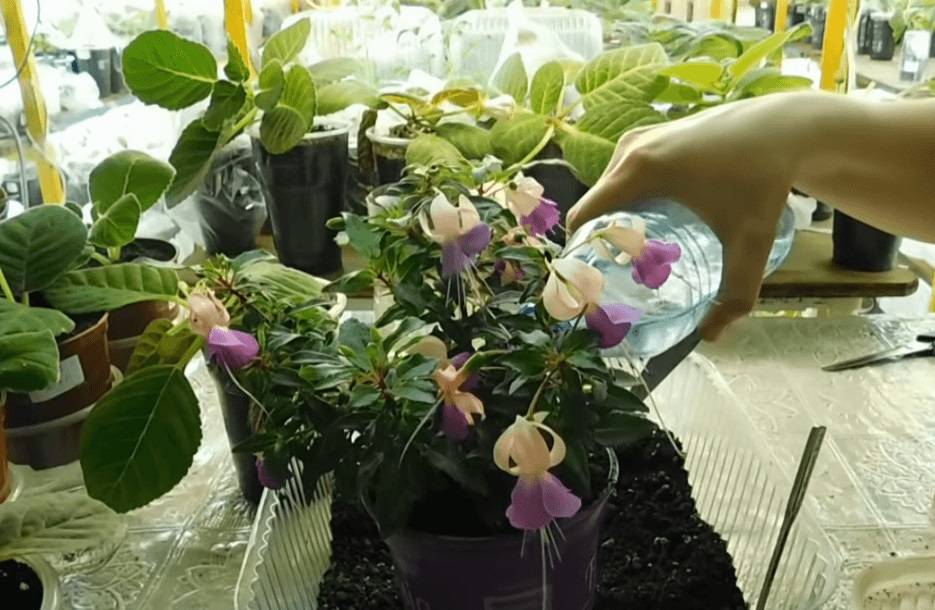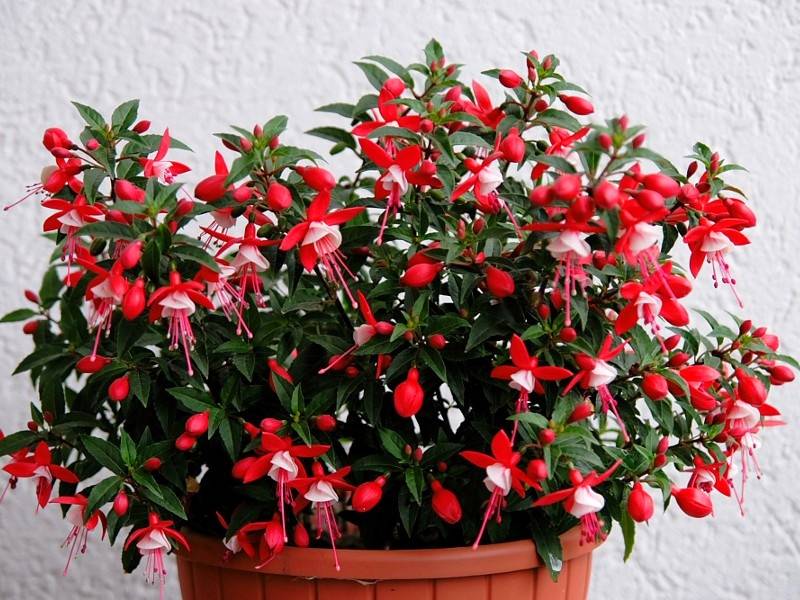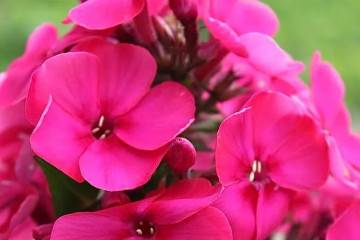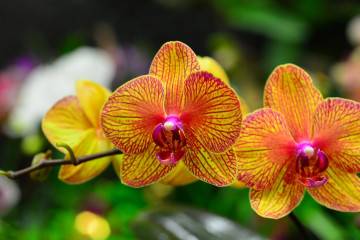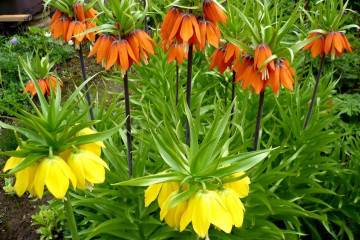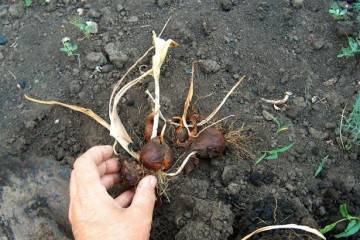How to feed fuchsia for abundant flowering
Content:
Fuchsia - a flower for home decor, balcony, garden. It dissolves in April, blooms in waves almost all year round. But if there are few buds at the right time, they do not ripen, flower growers are worried about how to feed fuchsia for abundant flowering.
Fuchsia does not bloom: reasons
Scientifically, the indoor flower is called hybrid fuchsia (Fuchsia Hybrida). The fruit of the labors of a French botanist has delighted people around the world for over 300 years. The date when he was brought to Russia, history is silent. But gardeners know when fuchsia blooms on windowsills.
In the spring, the first "ballerinas" or "Chinese lanterns", as gardeners lovingly call the flower, appear. If the time has come, and flowering has not begun, or few buds have formed on the bush, and they are frail, not viable, then they are looking for reasons.
Lack of light
The vital activity of the plant is influenced by nutrients, moisture, air. But without light, these factors are irrelevant. Photons - particles of light - are the energy source for photosynthesis. This is the process by which organic compounds are formed in plants. Carbon dioxide, water, minerals without photons are ineffective.
The change of day and night, the length of daylight hours serve as a guideline for the plant in the stages of their development. They know when to start growing, flowering, and rest.
If fuchsia lacks light, it stretches, becomes thinner. Photosynthesis is weak, the plant is not up to flowering.
Air temperature
For the normal development of culture, an optimal temperature is needed. The life of each plant takes place at a certain temperature: there is a minimum and maximum limit. Low leads to a slowdown in all life processes, weakening of photosynthesis. The flower's breathing slows down, it will not bloom. When the temperature rises, the processes are activated.
If the room is hot, stuffy, fuchsia will direct all the moisture to compensate for the imperfections of the environment. Normal room temperature should be 20-24 ° C. In winter, during the dormant period, 3-7 ° C is enough for her.
Lack of moisture
Water is essential for any plant. It is a solvent that moves nutrients along its stems, leaves, buds. Therefore, the roots continuously extract moisture from the soil. They work as a pump, supply the flower not only with water from the soil, but also with minerals.
Plants absorb carbon dioxide from the air. It also dissolves in water and only then participates in photosynthesis. A lot of water evaporates through the stomata, so there should always be enough water.
Fuchsia is a moisture-loving plant. If there is not enough water, it will not bloom.
Pests and diseases
Fuchsias growing in the open air (on the balcony, in the country) are annoyed by the whitefly - a type of small moth. The parasite settles on the lower leaves, sucks juices from the plant. To get rid of, sprinkle with plain water. If the population is too large, use Aktara or phytoverm and tanrek insecticides.
In the hot summer, a spider mite settles on fuchsias. They are fighting with drugs fufanon, acarin.
The culture is also sick from improper care.Sluggish leaves, black spots and yellow streaks on them indicate a lack of nutrients in the soil. In this case, fertilizers for diseased fuchsias are indispensable for abundant flowering.
How to make fuchsia bloom profusely
They take comprehensive measures:
- maintain the correct temperature;
- provide the flower with diffused light in the house, partial shade in the garden;
- from spring to autumn, they are watered with soft, settled water. In a pot, good drainage is implied;
- maintain air humidity, spray the plant and the air around it twice a day.
In addition, the plant needs to be fed and fertilized.
Fertilizing the soil
In different phases of development, fertilizer is required for fuchsia with a specific composition. Cuttings and young bushes are fertilized with a balanced complex fertilizer with nitrogen. These are Effect Spring, Planet Miracle Growth.
When fuchsia grows up and gets stronger, fertilizers with phosphorus and potassium are applied to the soil. They will contribute to the laying of buds. In addition to the main components, the composition should include trace elements: manganese, iron. Zinc and magnesium have a good effect on growth and flowering. Mineral fertilizers alternate with organic ones.
Bone meal is added to the topsoil once a month (2 tablespoons per pot).
Fertilize often, but little by little.
Time and number of waterings
Fuchsia loves water. This is misleading for novice florists. Often the flower is poured. He does not have time to evaporate moisture, the excess leads to death. How much and how to water fuchsia in summer during flowering is decided by the state of the earth.
Water in the morning or evening when the soil in the pot is dry. It is better to give the plant a generous shower and water it as needed. In summer, more often - every 3-4 days, in winter, moisturize once a week.
There should be no water in the pallets. A flooded plant cannot be saved, since its roots rot.
If the soil in the pot is damp, and the leaves are hanging, the plant is pulled out with an earthen lump, inspected. Remove rotten brown roots. White, healthy, leave. The flower is transplanted into a new substrate.
If the roots are not suitable, cut the cuttings, put them in water, cover with a bag. When the roots appear, they are planted in a flowerpot.
Fuchsia feeding
The green mass is lush, and there are few buds, the feeding of fuchsias helps to increase the flowers.
Follow the rules:
- feed only healthy plants;
- diseased cultures are first treated, then fertilized;
- 2 hours before feeding the earth is moistened;
- from November to spring, plants are not fertilized;
- the newly transplanted young plant is not fed, so as not to burn the roots.
Organic fertilizers
How to feed fuchsias from organic matter, choose from the list:
- fertimix. Watered 2 times a month (20 g per 1 liter of water). Fertilizer based on vermicompost helps to form buds, gives the leaves a bright green color;
- bone flour. Apply once a month to the topsoil;
- "Living power for flower crops". Contains humic acids. Irrigate 2-3 times a month (10-30 g per bucket of water). Watered at the root (30-50 g per bucket) twice a month;
- peat oxidate. 1% solution carry out foliar feeding weekly.
Mineral compositions
During the flowering period, fuchsia needs to be fed with mineral fertilizers:
- "Bud" - sprayed once a week. Helps to bloom, flowers become rich and bright;
- "Uniflor-Bud" - for a large number of buds. Sprayed once a week;
- Spring Effect, Miracle Growth Planet. Dissolve 5 g of the drug in 2 liters of water, insist for a day. Sprayed once a week;
- Kemira suite. Watered 3 times a month (1 g per 2 liters of liquid).The drug increases the immunity of the plant;
- pocon, zircon - growth stimulants. For 1 liter of water, take 10 ml of top dressing.
Homemade products
In addition to ready-made preparations, flower growers use folk remedies to fertilize indoor plants:
- wood ash. 3 tbsp. spoons pour 1 liter of liquid, insist for a week. Watered at the root;
- succinic acid. One pharmacy tablet is dissolved in a liter of water. Suitable for root and foliar feeding to help the culture bloom;
- eggshell. The powder is added to the substrate when the flower is transplanted;
- banana peel. Dry, grind, add once a month to watering;
- tea brewing. Dry, mix with earth when planting.
Fuchsia is an unpretentious home flower. For abundant flowering, you need to love it, observe the basic conditions of care. This is watering, proper lighting, top dressing in the form of organic and mineral fertilizers, treatment for diseases and pests.

